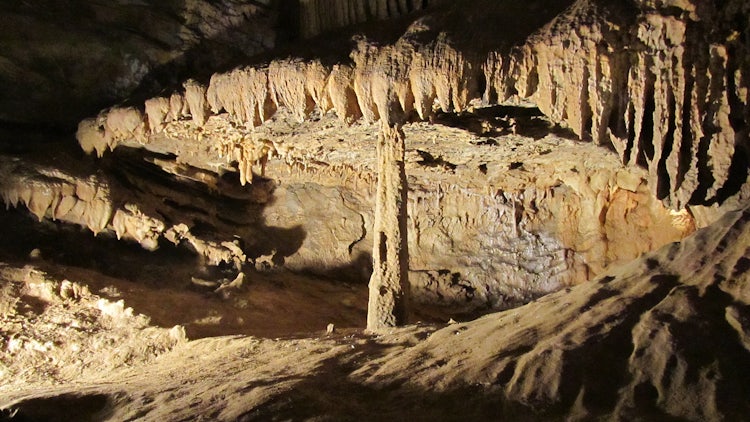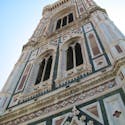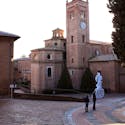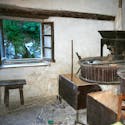Tuscany, a true open-air museum with masterpieces for everyone to enjoy, also offers visitors looking for several half hidden pearls of stunning beauty created by the best master of all time: Nature. One of these is the Antro del Corchia cave, practically a quarry mountain whose notoriety and fascination will capture your imagination.
The Apuan Alps Park of the Upper Versilia
The many tourists driving along the motorway that runs parallel to the sea of the Versilia must shift their gaze occasionally from the blue sea to the opposite direction and admire the splendid view of the mountains that rise up toward the sky. The Apuan Alps, with their white marble quarries, seem to be covered in snow even in the middle of summer; the perfect contrast to the scenic views of the sea.
But there are still very few people that actually leave the main motorway to head into the mountains.
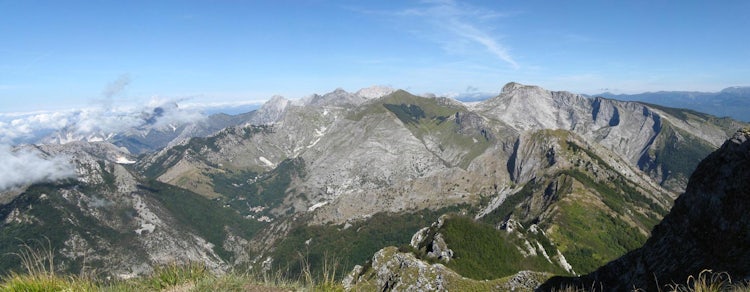
Toward Levigliani
If you have the opportunity, take the chance to do so! Set your GPS to guide you up to the small village of Levigliani, a fraction of Stazzema located in the Upper Versilia. This is what I recently did along with several other members of Credimpex (www.credimpex.it) on a cloudy and somewhat wet day of April, a day that turned out to offer several pleasant surprises.
The route takes you along the Porvincial road toward Arni, running along the clear waters of the Vezza River.
The environment quite suddenly changes: the mountains give way to glimpses of the coast and their majestic stance speaks of their true character. The valleys are narrow and steep with thick woods of green oak and chestnut trees on all sides.

Every so often, along the side of the most craggy slopes, there are long lines of large white rocks that have slipped down toward the valley, reminding us that the heart of these lands are made of stone and marble.
If you can resist stopping at every curve to take photographs of the impressive views, you will reach Levigliani, sitting at 600 meters above sea level, in just a matter of short time.
Suggestions for your visit:
The temperature within the cave is constant: 7.6°C (45.7°F) year-round. It is therefore recommended to dress in layers and put several of them on when preparing to enter. Fleece sweaters, even wool, might be good as surely as shoes/boots with a good grip on the soles.
The route through the caves is about 2km long (1.24 miles), with 1500 small and larger steps to climb. The entire route is completed in about 2 hours in the company of a guide.
Adult ticket costs €13, but there are several discounts available, for example for groups. You can also visit the "Mines of the Argento Vivo" by purchasing a combined ticket that will cover both visits.
The small village has one very interesting particularity about it: it is called a comunello, or small commune, an expression that indicates that the city and surrounding lands purchased from the Grand Duke of Tuscany centuries ago by single individuals and are managed and shared by all of the citizens equally.
This is nothing new, as the historical roots of this particular type of "commune" actually go all the way back to the Middle Ages. But is also true that very few examples of this type of local "government and ownership" still exist in Italy. The rights as well as responsabilities of such an agreement are inherited, and as the elders in the town explained to us, the condition of residency within the town has to be met in order for it to continue being passed down.
Levigliani offers various sites, all tied to the mines and to its past as a mining town. Despite its small size, the town has two museums tied to its heritage: the Museum of the Argento Vivo (Live Silver) and the Museum of Pietra Piegata (Bent Rock).
Once we arrive, our group divided into two; the more sedentary group decide to visit the interesting museum exhibits while the more adventurous group entered into the cave called the Antro del Corchia.
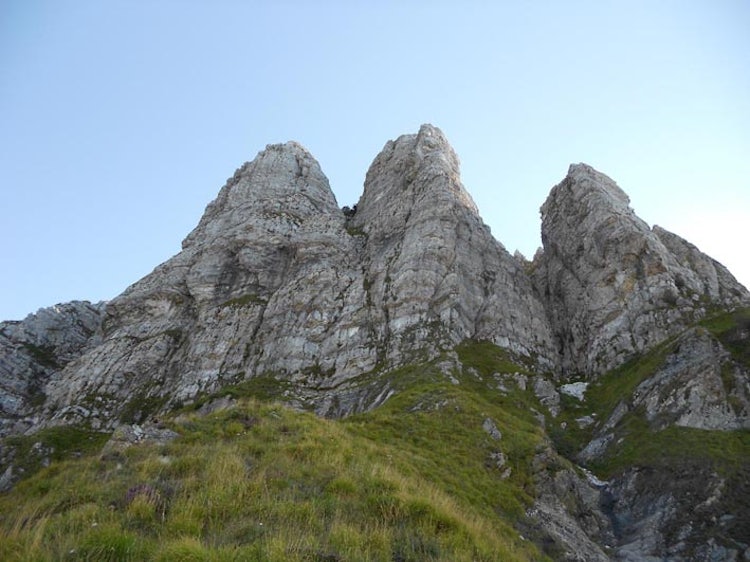
Discovering the Antro del Corchia
You can reach the Antro by catching one of the small shuttle buses that take you from the main parking lot in town to the cavern's entrance, located at 860 meters above sea level.
The cavern or system of caverns in the Antro are a "recent" discovery which happened completely by accident. A local was looking for new veins of marble to exploit and was surprised by a strong rush of wind — coming from the ground (or rather from a small hole in the ground)!
This is how the fascinating story began, a story still in progress. It is believed that the network of caverns and ravines actually extend over 70 km (43 miles) underground, most of which have not yet been explored, and with an altitude difference of over 1200 meters (3940 feet).
The Antro's caverns are thus some of the most extensive in the world, due to the presence of calcareous or chalky rocks which are highly soluble and, with a good amount of rain filtering through, have created an increadible karst underground system.
Karst topography is a landscape formed from the dissolution of soluble rocks such as limestone, dolomite, and gypsum. It is characterized by underground drainage systems with sinkholes and caves.
The Antro presents only a few small openings to the outside world which explains why very few traces have been found of human or animal dwellings inside.
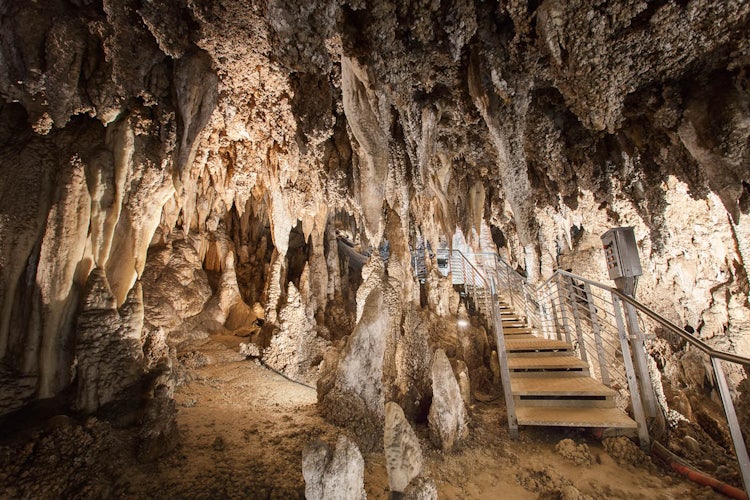
The uncontaminated environment is of significant scientific value and has attracted the attention of scientists around the world. Scientists analyze the rocks to study nthe Earth's climate going back up to three million years to the time of the lifting of the Apuan Alps from the seabed. The Antro is, therefore, a kind of natural archive, comparable in many positive ways to the most expensive expeditions to the depths of the Arctic ice cores.
Visiting the cave
The area that is accessible to tourists is obviously limited in comparison to the entire network of caverns but about two kilometers of trail are open and equipped with steel walkways and safety rails. The itinerary, with all of its stops, takes about two hours and is completed in the company of an expert guide that explains the specific and particular formations one is seeing.
A remarkable job has been accomplished in limiting our human impact on this special environment. The pristine nature of the cliffs has been respected, adapting and restricting the walkways to follow the natural course of the mountain. The type of lights used (cold in this case) also run on timers and only come on when needed.
The temperature inside the cavern is constant at around 8°C (46.4°F), while humidity can exceed 90%.
We ended up walking over 1500 steps/small terraces. Some of us worried thatour not-so-young" joints miht not make the climb. In reality, we soon discovered the itinerary is very feasible because the steps include several flat stretches over the route. What we did find was necessity a woolen sweater and lightweight hiking shoes, or at least with good rubber soles, for traction in the humid environment.

The entrance was from an old mine access and harmonized so well with the exterior that when the guide calls it "artificial", you have to look it over several times to be convinced. Along the entrance ramp there are three watertight doors to avoid contact between the inside atmosphere and the outside, which could create incredible rushing winds.
A Descent into Dante's Hell
The path begins and right away you're left gaping in amazement at your surroundings. Beyond a massive stalagmite, called "The Gendarme" for its position guarding the cave, you start the descent.
A deep cleft in the rock leads down in the direction we're heading, but if look up, you'll see that the tormented hole starts much higher; you cannot see the beginning, and you wonder if it comes from the very top of the mountain.
The walls are smooth from the water and translucent from the moisture. Artificial lighting, very well positioned, highlights the most unusual and striking forms. Impossible to forget the great "White Eagle with Spread Wings", created by a cluster of stalactites and stalagmites.
The prevailing color within these wonders is light amber with a few inserts of white or red and sometimes even blacks depending on the minerals that dissolved by water over thousands of years.
One enters deeper and deeper. The different "galleries" are not large but rather extensions of the cracks, which as they narrow, start off with zigzag patterns of great scenic effect, showing fascinating views.
As a Tuscan and the home of Dante Aligheri the medieval writer, it seems natural — and even a little obvious — to remember the description by Dante and the descent into Hell.
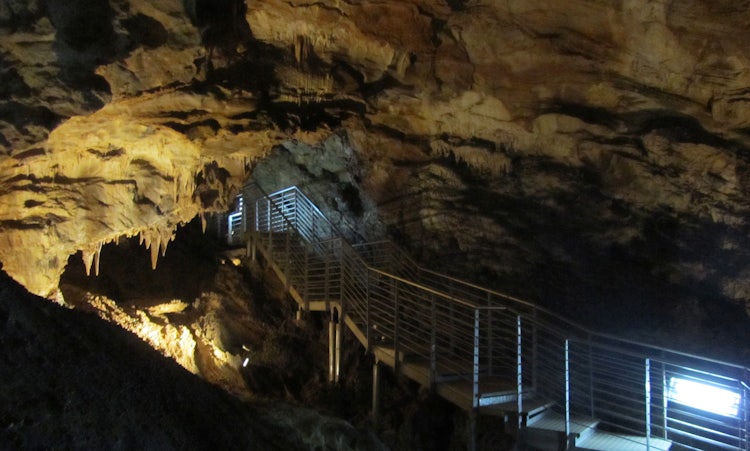
As you go deeper into the mountain, the more you get used to the environment even if it is gradually changing and, as the lights and prevalence of light colors abounds, the atmosphere becomes magical.
And instead, as Dante incites "Charon the demon with eyes of burning coal", it seems easier to meet up with the Lord of the Rings down here.
Pinnacles, projections, chopped off towers, fantastic creations, crevasses, columns and capitals of marble and rock fill both our gaze and memroy of our cameras despite the ban of their use. Along the path, ravines and cliffs are visible only up to where the light arrives and then are lost in the darkness. These make us understand that we are only barely touching the beginning of the abyss.
Graffiti of a Different Type
At some point, you almost have a feeling of desecration: some writings appear in black, leading us to believe some uncivilized graffiti artists have come even here. The sensation disappears when the guide explains that this place, called the "lake of Friday's Gallery", was discovered and so named by a Florentine speleological group that scored the area as a base camp for further explorations. The proximity of water and a few square meters of flat land for the camp made it ideal.
This makes us reflect that while this is a pleasant and convenient walk within this wonder of nature, for some it was a difficult and daring conquest that wasn't without risks.
We also reflect on what the experience must have been like for those who set foot knowing no one else had ever been there before, and what it must feel like when the helmet lights give life to the shadows of stalagmites and stalactites, which come alive and then disappear into the darkness only to suddenly reappear a little bigger and a bit further away.
We're nearing the final part of our itinerary as we reach the so-called "Gallery of Stalactites," where these formations, even if they are present all the way along our path, here seem to form an almost solid rain falling from above. The landscape is decidedly quite fairy-tale like. The sound of the small waterfalls of water becomes more intense.
Here and there small pools of clear water are revealed only when a few drops of water hit them, disturbing the surface.
